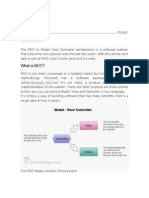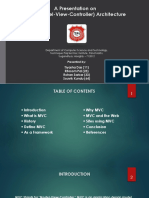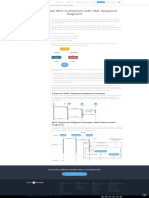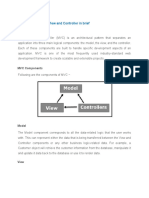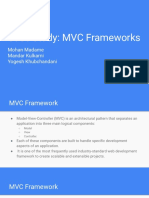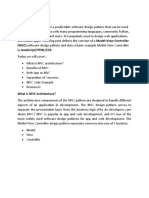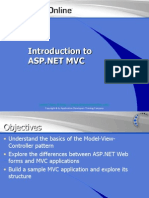0% found this document useful (0 votes)
5 views9 pagesLecture1 MVC Framework Intro
The MVC (Model-View-Controller) framework is a software architectural pattern that separates an application into three interconnected components: Model, View, and Controller. It offers features such as separation of concerns, scalability, and test-driven development, making it suitable for complex applications. While it has advantages like maintainability and SEO-friendliness, it also presents challenges like increased complexity and overhead for smaller projects.
Uploaded by
tahirsg007Copyright
© © All Rights Reserved
We take content rights seriously. If you suspect this is your content, claim it here.
Available Formats
Download as PPTX, PDF, TXT or read online on Scribd
0% found this document useful (0 votes)
5 views9 pagesLecture1 MVC Framework Intro
The MVC (Model-View-Controller) framework is a software architectural pattern that separates an application into three interconnected components: Model, View, and Controller. It offers features such as separation of concerns, scalability, and test-driven development, making it suitable for complex applications. While it has advantages like maintainability and SEO-friendliness, it also presents challenges like increased complexity and overhead for smaller projects.
Uploaded by
tahirsg007Copyright
© © All Rights Reserved
We take content rights seriously. If you suspect this is your content, claim it here.
Available Formats
Download as PPTX, PDF, TXT or read online on Scribd
/ 9



